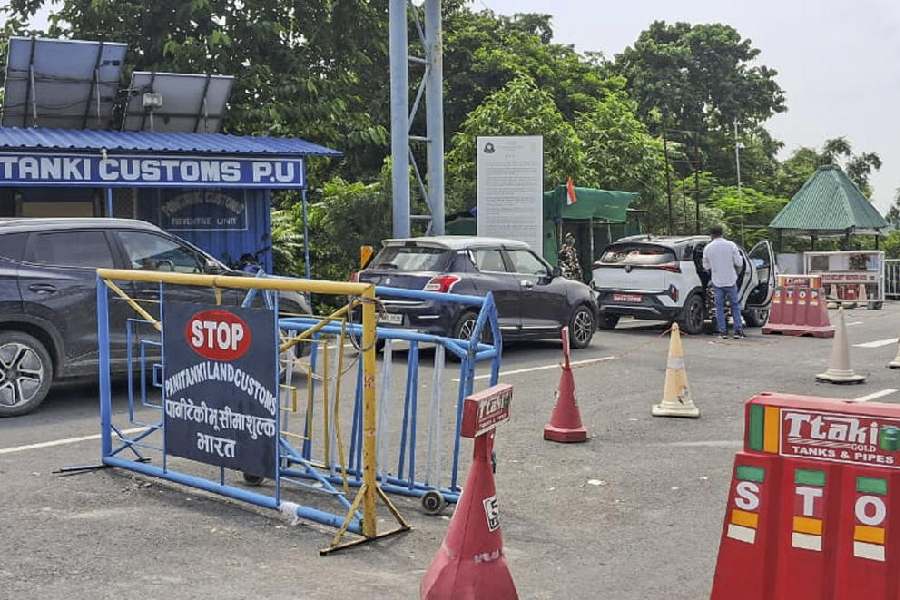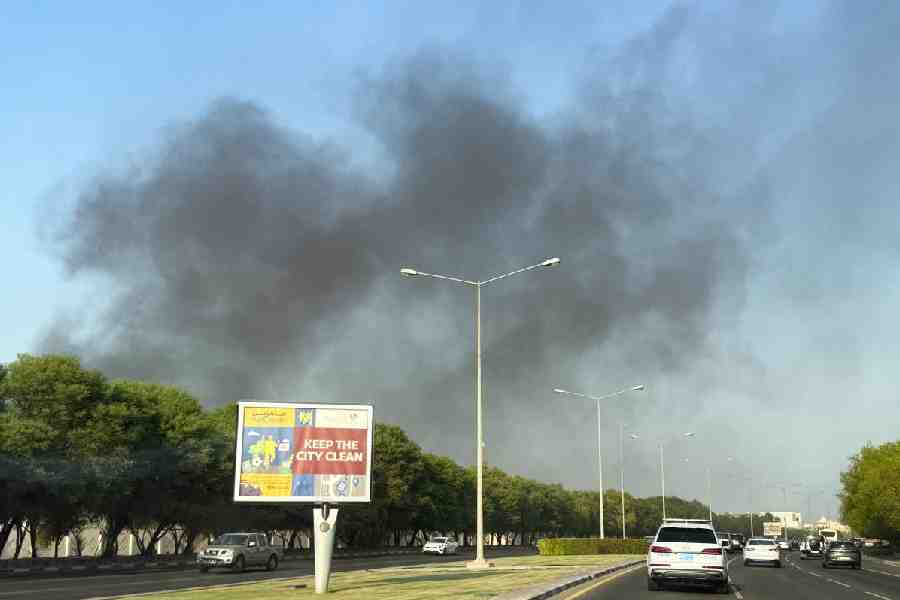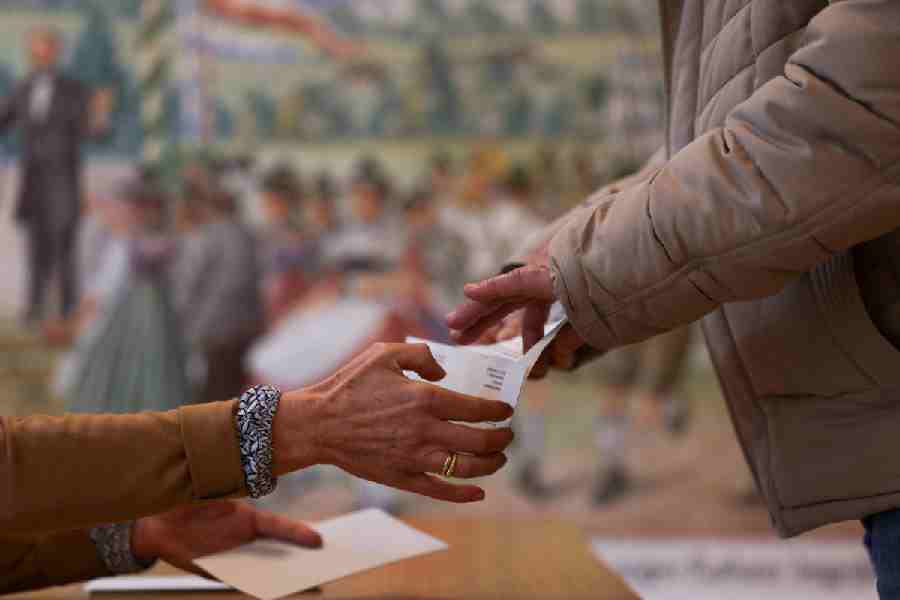 |
| Touch of the macabre: Mask by Anupam Chakravarty on display at CIMA |
Portraiture prevails no matter what. Through turns of taste and swings of style the courtly ritual of vanity of the pre-camera days has endured. And ?Face to Face?, the show at CIMA on portraiture from the 19th century to contemporary times, tells you why.
Like landscapes, portraiture as a form invites ? indeed induces ? artists to re-invent its terms in individual ways. And how individualist portraiture can be, how deviant from Western naturalistic academicism, is demonstrated by many of today?s artists. Besides, the label is extended to what wouldn?t, strictly speaking, be deemed portraiture in the traditional sense. The result is a fascinating range of exhibits that includes Battala prints, Kalighat pats, Bengal School and Company School examples.
Not that portraits in the Western tradition are absent. There are two by Atul Bose. Another, by Sashi Hesh, is of a Bengali lady ? for she wears what seems like a Benarasi in the Bengali way ? who, it is learnt, is of the Tagore family. Interestingly, she?s enlightened enough to both sit for the male artist and dispense with the forehead dot, which may refer to the family?s Brahmo allegiance.
Three works by Abanindranath Tagore, including a self-portrait, will interest viewers. The portrait of a small boy ? his grandson ? in pastel is quite captivating. Dressed in a Chinese coat, he sits near a parrot on a perch. But his eyes aren?t focused on the bird. There?s a faraway, lost look in them. The light on his face and the tousled hair make him seem frail and pale as though he?s confined indoors like Dakghar?s Amal with imagination for company.
Of the other early works to note, there?s a Battala print of a quaintly disproportionate Shiva as a one-member orchestra, his many arms handling different instruments. Variations on the mother-child theme draw on mythology, depicting Durga with Ganesh and Jashoda with Krishna and Balaram. Portrait of a Begum is another painting to ponder. The unknown artist, working in oil, blends the miniature manner of stylised gestures and ornate details with Western perspective.
Coming to contemporary works, you?re held by Akbar Padamsee?s lean heads emerging, as it were, from chance stains of thin grey watercolour which pack emotional density. Ganesh Pyne?s Beast, blanched like a cadaver, stares out with sightless yet strangely stupefied eyes. And Arpita Singh Munnapa?s Golden Mantle has this brittle vulnerability.
In Dilip Samanta you see a spirit of sportive banter in the configuration of colour patches, paper cuttings, netting and other material that evoke inchoate faces. Sport is evident in the coconut shell masks of Anupam Chakravarty, too, but with a touch of the macabre as apertures are cut like in pumpkins on Halloween.
While Paresh Maity?s paintings leap to the eye for their strident colour and sharp lines, A. Balasubramaniam?s tight tangle of copper wire shaped like a head and enclosing an interior space is darkly brooding. In a different vein, Manu Parekh?s Tribute to Mother Teresa is another example of saying more with less.
Now for the sculptures. The heads by Ramkinkar Baij and Uma Siddhanta are intimate studies. But Somenath Hore?s masterly understatement in a barely inflected bronze sheet can reach across a spectrum of suggestions, especially in Poet.










